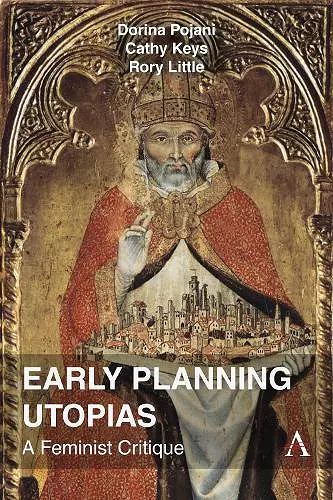Early Planning Utopias
A Feminist Critique
Dorina Pojani author Cathy Keys author Rory Little author
Format:Paperback
Publisher:Anthem Press
Publishing:15th Jul '25
£20.99
This title is due to be published on 15th July, and will be despatched as soon as possible.

Explores the role of gender in the visioning of the ideal city in the 19th and 20th centuries, informed by contemporary feminist concern with the way the legacy of patriarchal designs hamper women’s urban experiences
Interrogating canonical texts and plans written during the nineteenth and early twentieth century on both sides of the North Atlantic, this book explores the role of gender in the visioning of the ideal city.
There is little doubt that urban planning has historically failed women. To liberate the profession from patriarchal influences, it is necessary to revisit the preconceptions that shaped early efforts to design new cities or improve existing ones. This book critiques the work of twenty male planning luminaries who proposed urban models, interventions, and approaches on both sides of the North Atlantic during the Second Industrial Revolution. These early visions, often presented as emancipatory or utopian, set European and North American cities (as well as their colonial counterparts) on an inexorable masculinist path. The grand urban plans and projects of the late 19th and early 20th centuries were largely bankrolled by wealth extracted from colonial enterprises in Africa, Asia, and Latin America.
A reverence for geometry, order, and standardization, alongside a monumental scale, reflected a hegemonic and monolithic vision of the city, with little tolerance for cultural or physical difference. Limitless urban growth and the rapid, effortless movement of people were valorised, and for the first time in history, roads became more important than homes. Many of these same planners, indifferent to cultural and physical differences, readily accepted the continuation of class divisions in cities. Comprehensive plans for both small and large settlements were hierarchical, with the wealthiest or most powerful occupying central positions of power. Functional segregation, later institutionalized as “zoning,” enforced spatial divisions between the public (male) and private (female) spheres. Even as the planning agenda prioritized “men’s issues” related to industry and commerce, domestic ideology was promoted during this period.
The book also highlights the work of several female activists and reformers from the same era. Although these women rarely envisioned full-blown urban utopias or produced extensive writings on planning, they worked to improve built environments for all. Female reformers were more attuned to the lived experiences of city dwellers than male planners, architects, and engineers. While men focused on structures and infrastructure, women were concerned with the human condition. Rather than expanding or clearing out the existing urban fabric, women sought to restore it. Practically, women extended...
ISBN: 9781839994524
Dimensions: 229mm x 153mm x 13mm
Weight: 454g
160 pages